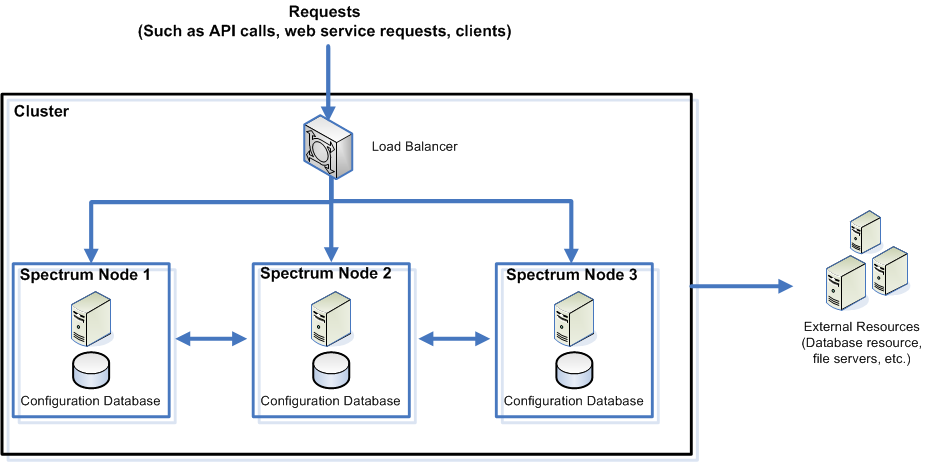Clustered Architecture
This diagram illustrates the cluster architecture:

Load Balancer
As requests come into the cluster, the load balancer identifies the best available Spectrum Technology Platform node to handle the request. The request is then passed to a Spectrum Technology Platform node.
From the user's perspective, the distributed architecture is handled automatically behind the scenes. The user sends a request to the load balancer URL and port for Spectrum Technology Platform (typically port 80 for a distributed environment) as if it were a single Spectrum Technology Platform server.
Nodes
A node is a Spectrum Technology Platform server installation. Each node has a copy of the configuration database. Each copy is continuously synchronized. This enables each node to share the same settings, such as license information, dataflows, and database resources.
To configure the cluster, simply point Management Console or Enterprise Designer to the load balancer URL and port for Spectrum Technology Platform (typically port 80 for a distributed environment).
External Resources
The definitions for external resources such as database resources (postal databases and geocoding databases for example), JDBC connections, and file servers, reside in the configuration database. The resources themselves (databases, files, web services) can reside anywhere you choose. Database resources can be installed either on each node in the cluster or on a shared network location.
Because the database resources themselves reside outside the cluster, multiple clusters can share the same database resources. You must create the resource definitions in each cluster using Management Console. For example if you want multiple clusters to share the same geocoding database, you can install the geocoding database on a server accessible from each cluster, then in Management Console point each cluster to the geocoding database.
Installing a Cluster
See Installing a Cluster for more information.